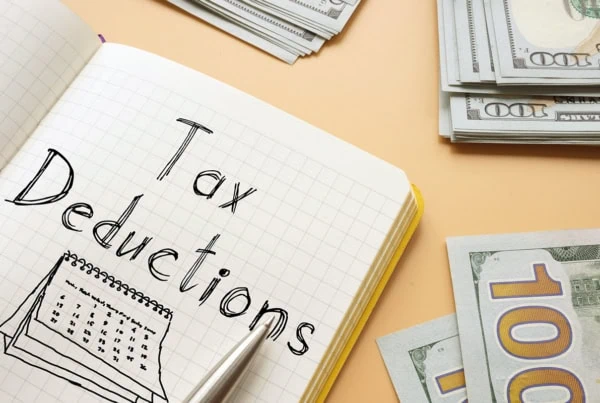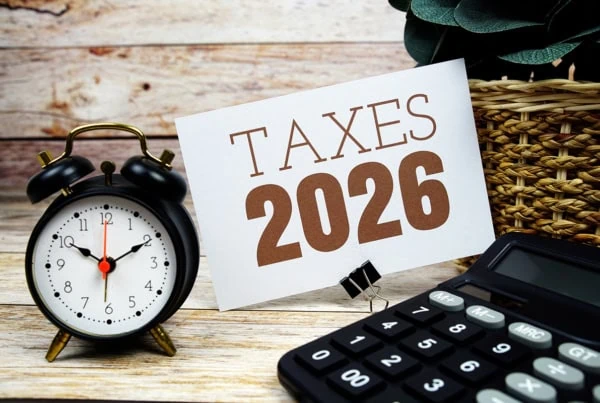Table of Contents
What is a Tax Credit?
First, let’s look at tax credits. These items offset a taxpayer’s tax liability in a given year and are superior to tax deductions. This is due to their nature of offsetting tax liability dollar-for-dollar as opposed to a reduction in taxable income.What is the Solar Energy Investment Tax Credit?
The solar energy investment tax credit applies to new solar projects constructed in the U.S. and comes as a 30% tax credit on the qualified cost of the project’s generating equipment. The credit stands at 30% today, but will step down each year after 2019 and eventually sunset after 2021 for homeowners. A 10% credit remains in place for businesses indefinitely. Over the last several decades, the U.S. government has offered various incentives for solar power. As of this writing, the largest financial incentive in place for projects is the 30% federal ITC. In brief, the ITC came about and morphed as a result of:- The Energy Policy Act of 2005, which increased the ITC from 10% of the qualifying project’s cost to 30% for new projects through 2007
- In 2008, the Emergency Economic Stabilization Act extended the 30% ITC through 12/31/2016
- An agreement, as part of the omnibus spending bill in 2015, extended the ITC through 2021 at which time commercial projects will again receive only 10% and homeowners will no longer receive the ITC
Is the 30% Investment Tax Credit Refundable?
Unlike some other tax credits, like the earned income tax credit, the 30% solar ITC is not refundable. As a taxpayer, you must have tax liability to offset to claim the ITC. The unused portion of the credit can carry over to future tax years for up to five years. For non-profits or government agencies which have no tax liability, they currently cannot take advantage of the ITC directly. However, some have partnered with third-parties who have tax liability and can take advantage of the ITC.Solar Investment Tax Credit Recapture Rules
When considering a solar project and how the ITC can reduce costs, be mindful of recapture rules. The ITC vests 20 percent per year, or fully after 5 years. The vesting schedule begins when placing the project in service and steps down on each anniversary thereafter. If the taxpayer chooses to dispose of the Section 1231 solar property prior to five years, the IRS recaptures the unvested portion of the ITC. This means the taxpayer will have an increased tax bill for the year in which the recapture occurs. The tax bill increases to an amount equal to the unvested ITC and no interest or penalties will apply, assuming the taxpayer files the return on time and correctly.How Do I Claim the Solar Energy Tax Credit?
To claim the 30% ITC, you will need to complete IRS Form 5965 to verify your qualification and claim on the renewable energy investment tax credit. From there, this information will show on your Form 1040 which includes information from other documents like your Form W-2 and 1099s. If your solar system is sold as part of an asset disposition as a business, it will need to be listed on your Form 8594 and will qualify for capital treatment.My Parents’ Solar PV + Battery Backup Experience
When my parents installed rooftop solar on their home, they qualified for the federal ITC and claimed it as a credit on their income tax return. At the time, Louisiana also offered a very generous refundable tax credit equivalent to 50% of the project’s installed costs. Because my parents itemized their deductions, they had to claim the refundable tax credit as income on their federal tax return, thereby reducing the effectiveness of the state credit. Regardless, the two credits combined to lower the system costs dramatically. Since 2011, my parents have rarely paid more than a minimum bill to their utility. Their system also came paired with a battery backup system which allows them to continue using their panels during blackouts. Because of their location in the southeast and the frequency of hurricanes, this element gives them added peace of mind. For reference, rooftop solar panels cannot provide power during an outage unless paired with a backup generator or battery system. This is because the inverters (discussed below) require power to change the energy from direct current to alternating current. Without this inversion, the home cannot use the solar power and the house suffers from a blackout like everyone else affected. My parents sometimes receive automated calls and text messages from their utility alerting them of an outage. They have no awareness of it because their battery plus solar photovoltaic (PV) combination provide them continuous power. The next time a storm rolls through New Orleans and causes an extended outage, they will likely have little issue ensuring the lights (and A/C) stay on and their food does not spoil in the refrigerator. They will operate like an islanded microgrid.How to Calculate the ITC
When calculating the total tax credit received under the ITC, the methodology differs for homeowners and businesses. Homeowners calculate the 30% credit on the net installed cost of the solar system. In other words, after the homeowner has deducted the value or any awarded state or utility rebates. For example, let’s say a homeowner purchased a 6 kilowatt (KW) system and paid $3 per watt (W), or $3,000 per kilowatt (1 kW = 1,000 W). The total system cost comes to $18,000 ($3,000/kW * 6 kW) and the state and utility combine to offer $3,000 in rebates, bringing the total upfront cost to $15,000. To calculate the homeowner’s ITC: 30% * $15,000 = $4,500 ITC to offset tax liability. This brings the total effective cost of the homeowner’s solar system to $10,500 ($18,000 – $3,000 – $4,500), or $1.75/watt. For businesses, their ITC triggers off gross installed cost of the solar system. Or, before deducting any state or utility rebates. Using the same example as above: 30% * $18,000 = $5,400 as a credit to use towards tax liability. This sounds like businesses receive a higher ITC. However, when the business receives the same $3,000 state and utility incentives, the IRS considers this $3,000 as earned income and becomes taxable. For homeowners, the $3,000 counts as a “reduction in value” like a sale discount and does not have a tax consequence. Homeowners could use this tax credit to offset their tax liability and learn how to pay zero tax on their passive income as well. For a brief overview of this information, see the YouTube video below.What are Other Incentives to Make Solar Energy Attractive?
Prior to 2000, most companies, organizations, or governments installed solar panels for research and development (R&D) or demonstration projects. These projects were small in scale due to very high costs associated with the technology at the time. However, in the early 2000s, supportive policies came into play in Europe and the U.S. which began to bring costs down. In Europe, particular countries (i.e., Germany, Italy, and Spain) opted to drive adoption of renewable energy sources with feed-in tariffs (FiTs). These payment mechanisms operate like long-term fixed price power purchase agreements (PPAs) and last 10-25 years with a price well above market. These agreements drove significant renewable energy buildout.Renewable Portfolio Standards
In the U.S., many states have implemented renewable portfolio standards (RPS) policies to increase the amount of renewable capacity on the power grid. An RPS is a state-level policy which requires utilities (or in some cases, just investor-owned utilities or IOUs) to procure certain amounts of energy from renewable sources. Some RPS requirements contain provisions for specific renewable energy type carve-outs (e.g., wind, solar, biomass). Compliance timelines vary for RPS requirements, and as a result, did not necessarily trigger the same pace or level of solar investments as seen by Europe’s generous subsidies.Germany’s Energiewende, or “Energy Transition”
The predominant European adopter of renewable energy was Germany. The country had installed 1 gigawatt (GW) of solar PV by 2005 and more than 45 GW operates as of year-end 2018. This effort fell under the country’s Energiewende movement, translated as “energy transition”. The policy champions a change from high-carbon intensity generation sources to a low-carbon, environmentally sound, reliable and affordable energy supply. The effort accelerated following the Fukushima Daiichi nuclear incident in Japan. As a result of the terrible tsunami which flooded the nuclear reactor and caused radiation leakage, Germany decided to remove all nuclear generation from the country by 2022. In effect, this doubled transition emphasis triggered the unintended consequence of increasing carbon emissions. Prematurely retiring 9 nuclear power plants, important for baseload power needs, made the next best solution coal power. The country’s only built-in baseload capacity alternative operated on coal, one of the dirtiest fuel sources. Replacing nuclear power with coal power puts a zero-carbon emitting resource out of commission and substitutes it with the dirtiest form of generation. Hardly the desired effect Germany sought at the outset of the Energiewende program. The overall goal of Energiewende would have the country transition in increments toward a carbon-free future by 2050. The country has begun to turn to offshore wind and long-distance transmission as a means of replacing coal power in the long-run. As economies of scale and experience curves decrease costs, these new technologies of the future may enhance the percentage of energy supply coming from renewables as opposed to coal.More on Renewable Portfolio Standards
Learning from Germany’s expensive FiTs, the U.S. preferred a market-based solution to promote the adoption of renewable technologies. RPS requirements created demand for large solar investments, most predominantly in California and the Southwest U.S., an area rich with potential. The federal ITC provided an incentive mechanism to lower these costs. In the map I created above, you can see the dispersion of solar projects across the country. You’ll see high activity around areas with high solar resource potential like the southwest and in south Florida (areas colored in red). You can also see clustering in non-resource rich states like North Carolina, Massachusetts, New Jersey, and Minnesota. These states instituted extremely generous state-level policies which attracted tremendous solar build out. This likely would not have happened absent these incentives, including high RPS requirements. However, RPS programs rely on the most cost-effective renewable resource through bidding processes and are not handed out on a first come, first served basis like FiTs in Europe. RPS policies combine requirements to seek sources of renewable energy while also relying on market mechanisms to select projects. Competitive auctions and long-term contracting and financing make RPS a more equitable distribution of subsidies based on economic-competitiveness. In contrast, FiTs serve as blunter instruments such that they do not place value on market-based solutions. Instead, FiTs compensate renewable resources at an administratively-set rate, which often falls out of synch with the market. In the U.S., FiTs aren’t a great fit. Sorry, I had to say it. However, other federal incentives have helped to drive growth in the U.S. as well. Namely:- the 30% federal investment tax credit (ITC) discussed above
- Temporary Cash Grants offered by Section 1603
- Loan Guarantees made under Section 1705
- MACRS depreciation and special bonus depreciation allowance
- Net Energy Metering policies (residential-scale solar)
- State-level incentives like PACE loans
- Solar Renewable Energy Credits (SRECs)
U.S. Department of Treasury Section 1603 Grants
During the recession, taxable income for companies, let alone developers, was scarce and rendered the ITC virtually unusable. Remember, without tax liability, you cannot use the 30% ITC. In response to this situation, the U.S. government created a temporary cash grant option (commonly called a Section 1603 Grant) in lieu of the 30% ITC as part of the American Recovery and Reinvestment Tax Act (ARRA). This served as additional economic stimulus to the solar industry. The cash grant provided an equivalent amount of funds in replacement of tax credits for certain renewable energy property (including wind power). The grant equaled 30 percent of the development and construction costs of eligible property and required no tax liability to offset and receive the benefit. The program has since expired. To-date, billions of dollars have flowed through the Department of Treasury’s 1603 grants.U.S. Department of Energy Loan Guarantees
The U.S. Department of Energy’s Loan Program Office (LPO) provided loan guarantees under Section 1705 of the ARRA, bridging a finance gap for five PV projects larger than 100 megawatts (MW) each. These loan guarantees provided certainty to lenders that these solar projects would receive federal government backing in the event of loan default. This made the private financing arrangements far less risky and allowed for easier financing for solar developers. Today, an additional 17 solar PV projects greater than 100 MW, or 3,600 MW total, have come online on account of the LPO program. Nearly all of these projects reside in the western U.S.Accelerated Depreciation (MACRS Depreciation Treatment for Solar Systems)
Use of Modified Accelerated Cost Recovery System (MACRS) provides a more favorable depreciation schedule for solar projects. The accelerated depreciation treatment allows a 5-year depreciable life, despite many solar projects having 20+ year expected useful lifetimes under an economic depreciation method. Taking advantage of timing differences, MACRS and bonus depreciation reduce a qualifying solar project’s taxable income in its early years, thereby leading to a lower levelized cost of electricity (LCOE). The 100% bonus depreciation deduction has the same effect as claiming the Section 179 deduction and lowering taxable income equivalent to the system value.State Net Energy Metering Policies
The Energy Policy Act of 2005 also amended the Public Utilities Regulatory Policy Act (PURPA) of 1978 by adding federal support for net energy metering (NEM) to be instituted by states and utilities. Generally speaking, under PURPA, utilities must interconnect qualifying facilities (QFs) and pay those facilities for any energy delivered to the grid at a state regulator-set avoided cost rate, provided the QFs meet certain criteria. This law guarantees a minimum payment for unused (excess) energy generated by rooftop solar projects. However, most forms of NEM pay a full retail credit for the excess energy sold back to the grid. Under most forms of NEM policy, the customer pays for the net quantity of electricity recorded on two channels of a bi-directional net meter. Channel 1 is the energy purchased by the customer from the utility while channel 2 is the energy produced and sold back to the utility. Any excess credits remaining at month-end typically rollover to the next month to offset future usage. In effect, they receive a full retail credit due to this treatment. Although utilities raised concerns in 2005 when the Energy Policy Act passed, early NEM policies did not draw significant opposition. However, as adoption of rooftop solar PV has grown, net metering has attracted a lot of ire from utilities and stakeholders regarding cost-shifting to non-NEM customers. For reference, in the mid-1990s, the U.S. had roughly 10,000 power plants (nearly all owned by utilities, independent power producers, and industrial customers with on-site, large-scale generation). Many of the industrial customer-owned projects were cogeneration units that qualified under PURPA for avoided cost rates mentioned above. Today, the composition of grid-connected power generators has changed dramatically with nearly 1,000,000 generators due in most part to the widespread adoption of rooftop solar PV in states like Arizona, California, Hawaii, Colorado, Massachusetts, and even Louisiana. The vast majority of these states use NEM to compensate for excess energy delivered to the grid. Over concerns related to cost-shifting and grid reliability, many states have instituted percentage or MW caps on NEM to limit growth to a manageable level. Many jurisdictions now have open or have gone through proceedings to reconsider their NEM policies and/or develop successor rules that which are perceived as fairer and more sustainable. Common NEM alternatives presented by utilities include:- revising compensation for excess energy delivered to the grid
- increasing fixed charges
- adding demand charges
- reducing volumetric rates for NEM customers
- adding a Transmission and Distribution (T&D) access charge
Other State Incentives Beyond NEM Policies
Some states (and even utilities) continue to offer other means of incentivizing solar adoption in addition to RPS policies. Those incentives include:- cash rebates
- tax credits
- exemption from sales and property taxes
- loan programs such as Property Assessed Clean Energy (PACE)
- streamlined permitting





![What’s Your Capital Gains Tax Rate? [2025 + 2026] 4 whats your capital gains tax rate](https://youngandtheinvested.com/wp-content/uploads/whats-your-capital-gains-tax-rate-600x403.webp)
